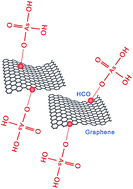Rapid adsorption removal of arsenate by hydrous cerium oxide–graphene composite†
Abstract
Arsenic contamination has posed a health risk to millions of people around the world. In this study, a novel adsorbent, hydrous cerium oxide modified graphene (GNP-HCO), was synthesized for arsenic removal from aqueous solution. In the kinetics study, >88% of the equilibrium adsorption capacity of arsenate (As(V)) can be achieved within the initial 20 min. Such a rapid adsorption rate showed its promising potential towards actual application. The experimental data was better described by the Langmuir isotherm model, and the maximum adsorption capacities were 62.33 and 41.31 mg-As g−1 at pH 4.0 and 7.0, respectively, which are much higher than many modified carbon-based adsorbents previously reported. Phosphate appeared to be the most severe competitive interferent on arsenic adsorption. Furthermore, the adsorptive removal of arsenic from surface water matrix was also evaluated and the results demonstrated that only 15 mg L−1 adsorbent was required to reduce the arsenic concentration from 100 μg L−1 to <10 μg L−1. X-ray photoelectron spectroscopy (XPS) analysis indicated that the major chemical state of cerium (Ce) element in the adsorbent was +IV and the hydroxyl group might be involved in the adsorption process.


 Please wait while we load your content...
Please wait while we load your content...